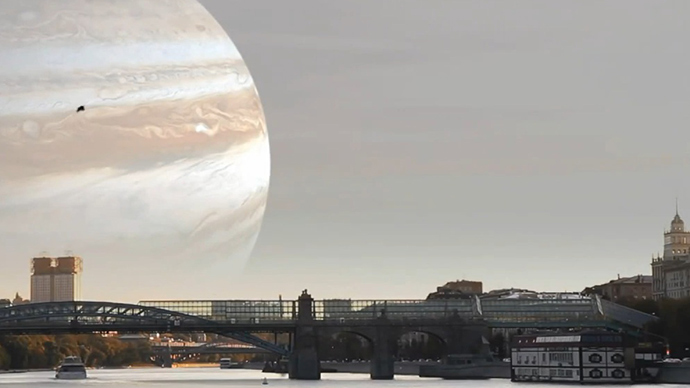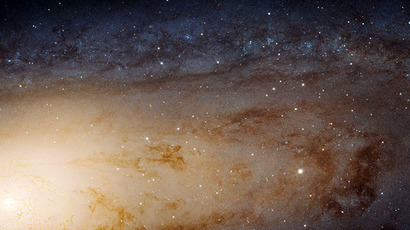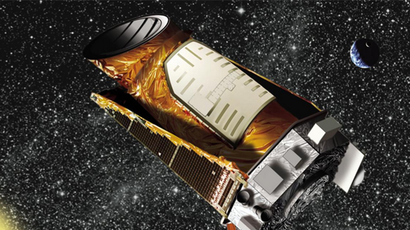Awesome CGI footage shows view from Earth if planets replaced moon

What if our sun was some other star? Say, Sirius or Polaris? And more than that: What if Jupiter and Saturn were at the same distance as the moon? Roscosmos, Russia’s Federal Space Agency, gave these fantasies a go in two amazing videos.

The first video gives an idea of what we would see above our heads if other planets in the Solar System were as close to Earth as the Moon – which is some 384,000 km (234,000 miles) away. While Mercury, the farthest from our planet and closest to the Sun would look pretty much as the Moon, being of similar size, it’s giants such as Jupiter and Saturn that are stunning.
Images show Jupiter, which is almost 140,000 km (87,000 miles) in diameter, and the 116,000 km (72,000 mile) Saturn with its rings hanging large above Moscow’s skyline. The smaller planets – Uranus and Neptune – would not differ much from the Moon in size, but appear unusually blue.
READ MORE: 6 months of Earth in 6 mins: Astronaut shares ISS voyage in stunning time-lapse video
Another Roscosmos video demonstrates what the Russian capital would look like if other stars replaced the Sun in the sky.
If the Alpha Centauri system, the closest star system, shone brightly onto our planet, its component stars would appear similar to our sun – however, there would be three of them. Located four light years from the Earth, Alpha Centauri consists of two stars and a red dwarf Proxima Centauri.

Sirius, the brightest star in our planet's night sky, which is almost twice as big as the Sun, would be shedding bright whitish-blue light on us, while everything in view would be wrapped in orange under the giant Arcturus – which is the size of 25 suns, 37 light years away from us.
READ MORE: Eight new planets found in ‘Goldilocks' zone, 2 hailed as 'most Earth-like'
But even that would look pale into insignificance compared to supergiant Polaris, which shines with the brightness of 2,200 suns.














